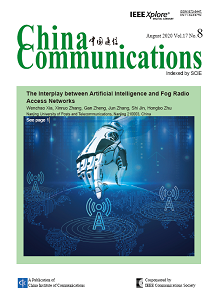Guest Editorial
Wenchao Xia, Xinruo Zhang, Gan Zheng, Jun Zhang, Shi Jin, Hongbo Zhu
2020, 17(8): 1-13.
The interplay between artificial intelligence (AI) and fog radio access networks (F-RANs) is investigated in this work from two perspectives: how F-RANs enable hierarchical AI to be deployed in wireless networks and how AI makes F-RANs smarter to better serve mobile devices. Due to the heterogeneity of processing capability, the cloud, fog, and device layers in F-RANs provide hierarchical intelligence via centralized, distributed, and federated learning. In addition, cross-layer learning is also introduced to further reduce the demand for the memory size of the mobile devices. On the other hand, AI provides F-RANs with technologies and methods to deal with massive data and make smarter decisions. Specifically, machine learning tools such as deep neural networks are introduced for data processing, while reinforcement learning (RL) algorithms are adopted for network optimization and decisions. Then, two examples of AI-based applications in F-RANs, i.e., health monitoring and intelligent transportation systems, are presented, followed by a case study of an RL-based caching application in the presence of spatio-temporal unknown content popularity to showcase the potential of applying AI to F-RANs.
